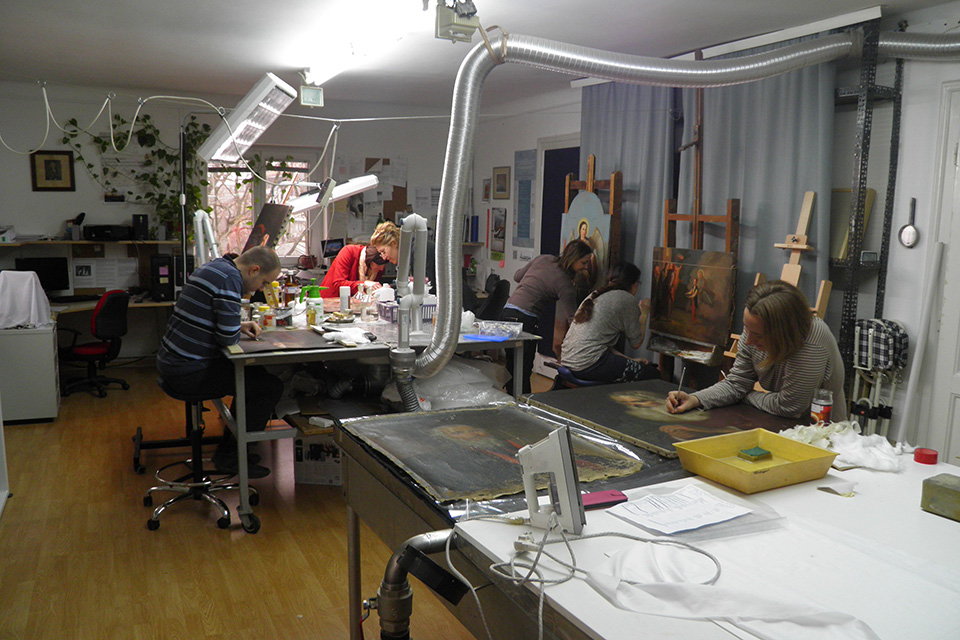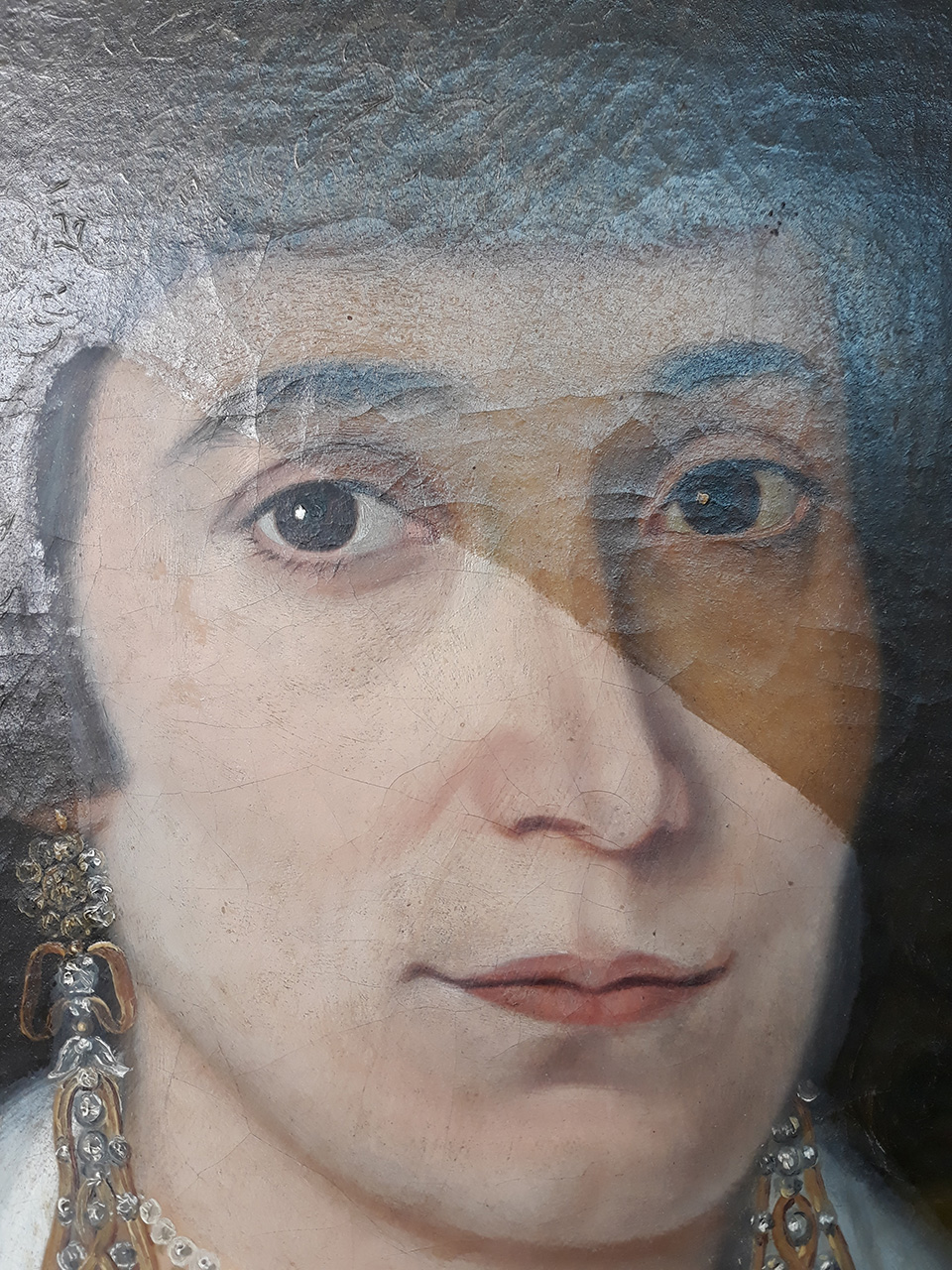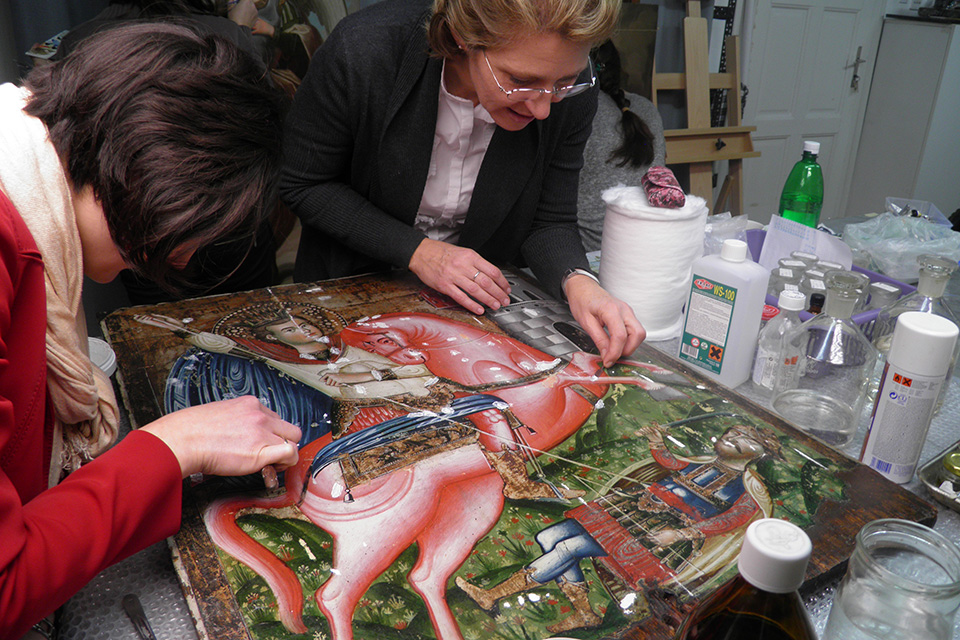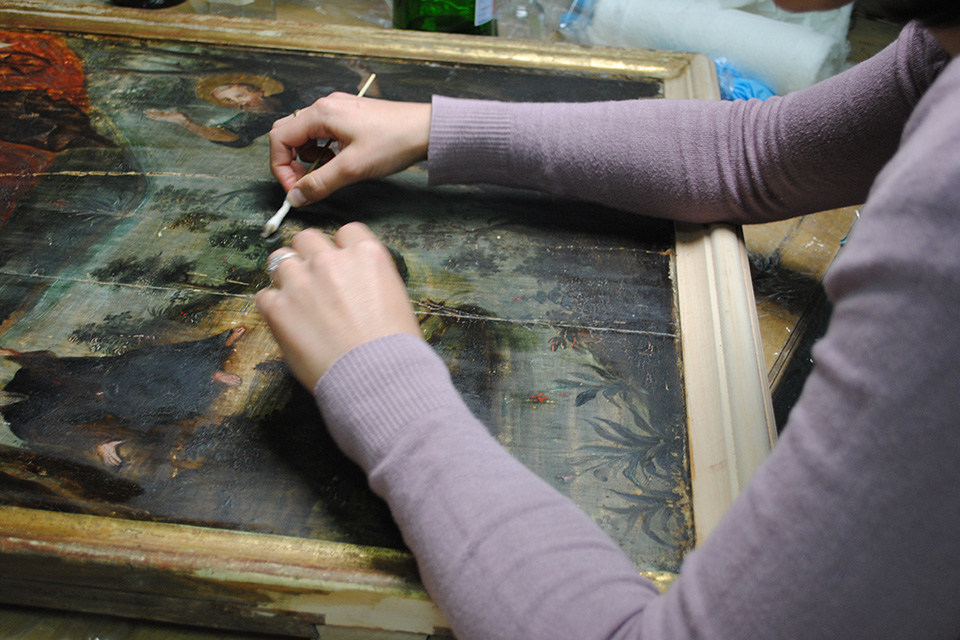Conservation and restoration
Our contribution to the culture of remembrance is reflected through our professional approach to the care and protection of artworks and the most advanced conservation and restoration procedures.
The Gallery of Matica Srpska within the Department of Research and Collection Care has a special Sector of Protection, i.e., the Conservation and Restoration Atelier, which has been taking care of artworks from the Gallery’s Collection for more than six decades.
The Gallery’s conservators and restorers deal with preventive protection and work on active conservation of works in the Gallery, as well as other museum institutions, with an emphasis on the application of gradual and minimal intervention principles. Also, conservators contribute to the program activities with the protection and presentation of works of art, participate in the preparation and realization of the exhibitions, as well as in the packaging and shipping the exhibits. The peculiarity of the Conservation and Restoration Atelier is reflected in the constant professional development of employees through national and international partnerships, the organization of professional conferences, workshops and lectures on various topics and achievements in the field of conservation and restoration.

The History of the GMS Conservation-Restoration Atelier
The history of collection care of the Gallery of Matica Srpska, once a collection of paintings of the Museum of Matica Srpska, dates back to the 19th century. Documented records valuable for the history of conservation of paintings in the Gallery of Matica Srpska have been preserved, such as the decision of the Management Board of Matica Srpska from 1972, that says “it is not allowed to smoke in the Matica’s Hall so as not to damage paintings and gilded frames”. The preparation of the paintings for the exhibition before the opening of the Matica Srpska Museum for the public in 1933 was entrusted to the Russian immigrant Vladimir Kurochkin, the former museum manager from Odessa. A noteworthy letter from the painter Uroš Predić, the honorary president of the Museum Board of Matica Srpska, dates from the same period, in which the recommendations for the preservation and conservation of paintings are summarized.
The first post-war conservator of the Matica Srpska Gallery, since 1950, was Jovan Sevdić, who equipped the first atelier. Ten years later, on the 1st of January 1960, a special department was established in the Gallery of Matica Srpska – The Conservation and Restoration Atelier. The first team of conservators were Rista Ćinkulov and Vladimir Bogdanović. They did a great job in collecting and systematical protection of icons from the churches of Bačka, Baranja, western Srem and Slavonia. A large number of icons painted by Serbian painters of the 18th century were collected and restored.
At that time, the tradition of the Northern European school of conservation dominated, based on the use of wax for the conservation of paintings on canvas and icons. Consequently, these techniques and materials were used in the conservation of most artworks of the Permanent Exhibition of the Gallery Matica Srpska, as well.
Despite all the difficulties related to high personnel turnover and unfavorable conditions of the 90’s of past century , the Conservation Atelier survived thanks to the art historian and conservator Ratomir Kulić. Since the beginning of the 21st century, the atelier has been strengthened with young experts whose professional development was continuously supported, continuously investing in new conservation technologies.
In addition to the conservators mentioned above Svetislav Nikolić, Dragan Matić, Milan Ostojić, Miroslav Zakić, Đura Radišić and many others have left their mark in the history of conservation of the Gallery of Matica Srpska.
Find out more about the history of conservation at the Gallery in the book The History of Conservation and Restoration in the Gallery of Matica Srpska. The book is available at the GMS Shop.


